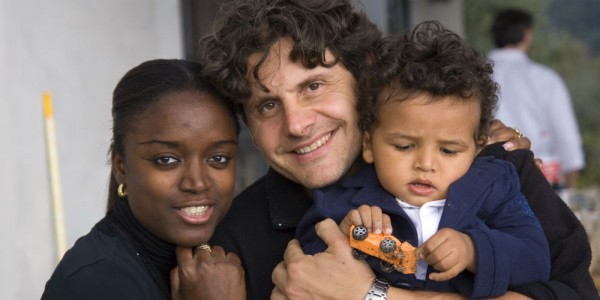Here’s the flip side.
In the mid-1990s– back in the age of infant adoption through agencies— when we decided to adopt, we did our research. At that time, 1 in 3 children being placed for adoption in Texas was African American, but only 1 in 60 potential adoptive families was African American. There were some studies back then on adopted children placed cross-culturally. They were small studies and few in number, but this was the research on which we had to rely. The studies showed no significant difference in adjustment or problems in adolescence between the kids who had been adopted within their ethnic group and those who had been adopted by parents of different ethnicity. There were some limitations to the studies, to be certain. The vast majority of cross-ethnic adoptions studied were Asian children placed in white homes. Few African American kids were in these groups. As well, the studies (then new) did not follow kids into adulthood or through the difficult transition to independent living.
We decided to tell our agency we were open to any child. It was a turning point. Things are different today.
Today, infant adoption is very rare. Adoptions tend to come through the foster care system. About 1 in 4 kids in the foster care system are African American, 1 in 5 are Hispanic, and only half are white. This is called dis-proportionality, and I will write about it in a later post. But the vast majority of families seeking to adopt, still, are white. Herein lies the conundrum.
While the laws still reflect the research and tend to state that ethnicity cannot be the only factor considered in adoptive placements, research today shows that it should be one factor considered. Transracially adopted children tend to struggle with being “different.” They tend to struggle with racial identity. They are often ill-equipped to deal with discrimination. These are big issues that are difficult to address.
Of our two older girls, one is biracial (African American and white) and one is African American. We would not trade our daughters for anything. They are ours and we are theirs. That said, had I known how hard it would be for our African American daughter to grab hold of her cultural heritage, to “fit in,” to be truly equipped to live as an adult American of African American descent… I wonder if we’d have had the courage to do it. It is heartbreaking to see your child struggle.
And yet I also have to face the reality; if she hadn’t been in our family, the odds are overwhelming she’d have been in another white family. I’m so grateful she is ours. She is a bright star, a true joy and she has my heart. And that is the flip side.
Are you ready to pursue adoption? Visit Adoption.org or call 1-800-ADOPT-98 to connect with compassionate, nonjudgmental adoption specialists who can help you get started on the journey of a lifetime.

